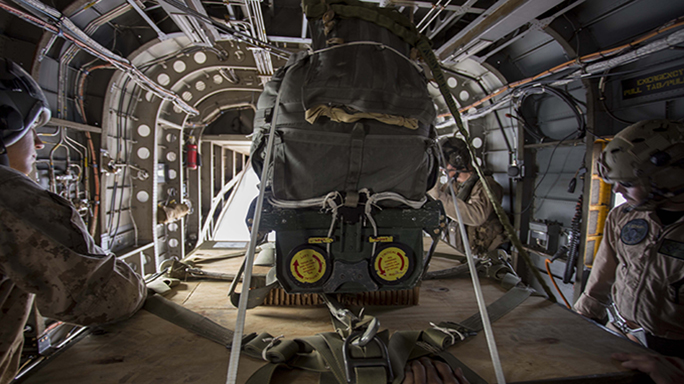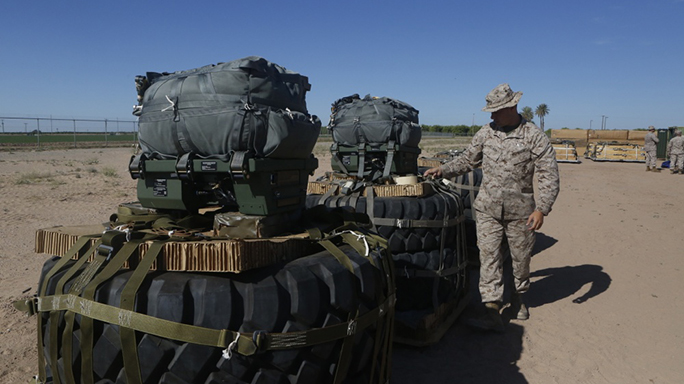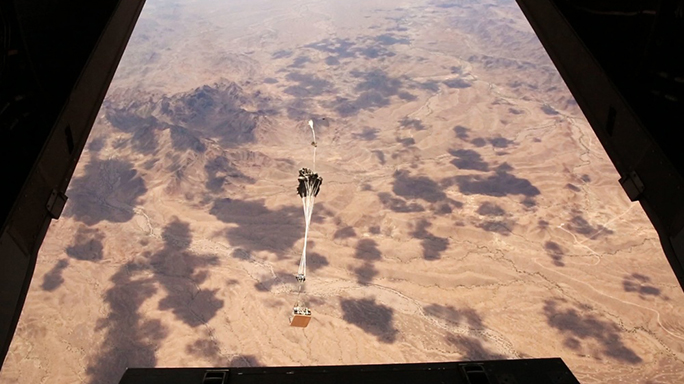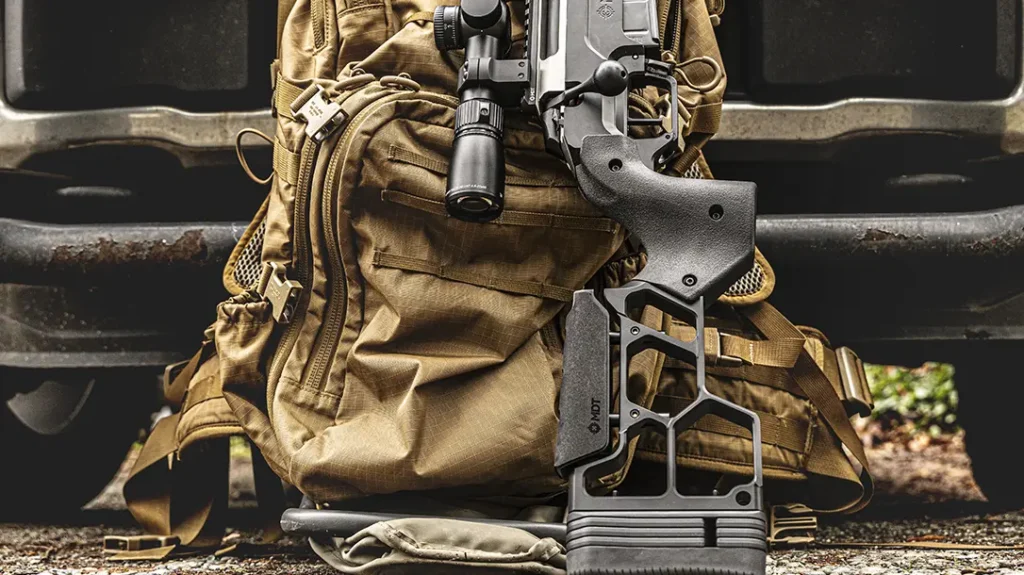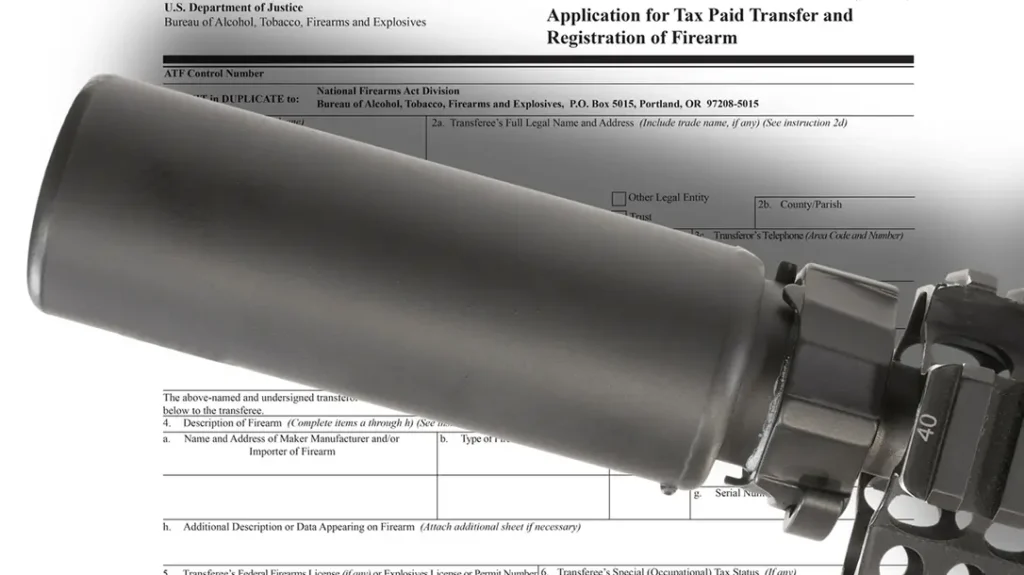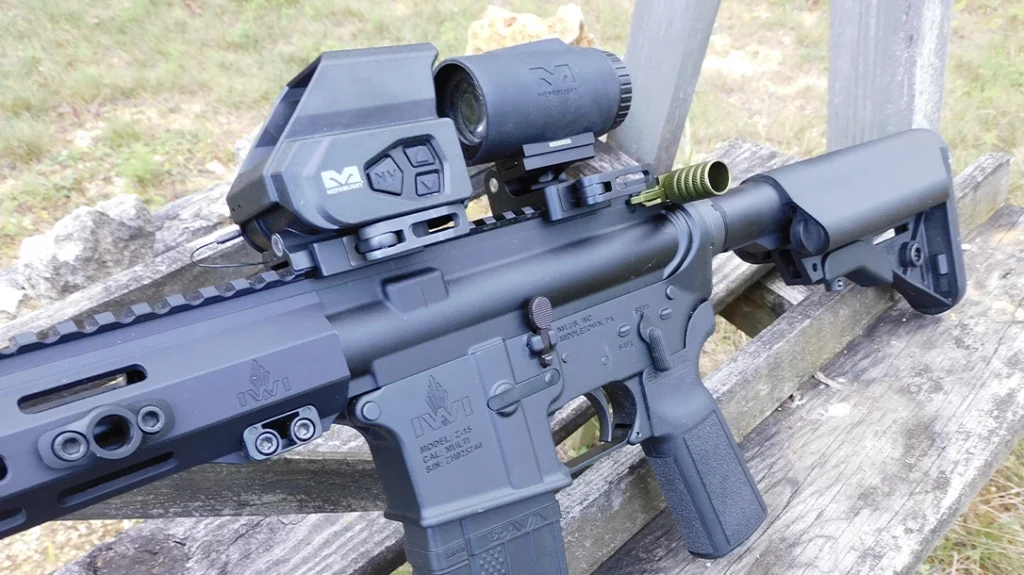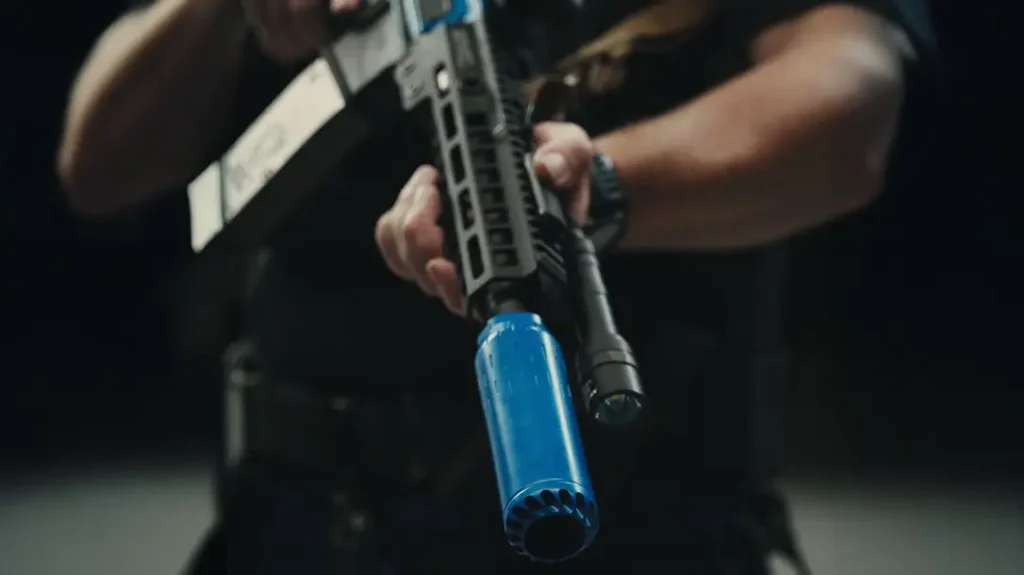Marine Corps Systems Command (MCSC) has announced it has fielded the last of 162 Joint Precision Airdrop Systems (JPADS) to Marines.
Initially introduced in 2008, the JPADS 2k offered “potentially life-saving capability” for Marines operating on the ground and in the air, MCSC said in a press release. Five years later, the Corps upgraded to the 2K-Modular, which featured a modular autonomous guidance unit dubbed the MAGU. The JPADS 2K-M boasted improved accuracy over “regular” airdrops, while also allowing aircraft to conduct higher-altitude and longer-distance drops from the drop zone.
“JPADS brings an important capability to Marines,” said Capt. Keith Rudolf, Aerial Delivery project officer with Marine Corps Systems Command’s Ground Combat Element Systems. “It’s not the answer for every situation, but the main goal is to keep people off the roads in an [improvised explosive device] environment or when small units are in locations that are not easily accessible by traditional logistic means.”
Advertisement — Continue Reading Below
JPADS are designed for situations where it’s easier to deliver supplies and equipment to ground units from the air as opposed to using a convoy, Rudolf said.
“An average combat logistics patrol in Afghanistan that’s running behind a route clearance platoon may travel at only five to six miles an hour,” he said. “Depending on how much supply you have on there, you may have a mile worth of trucks that are slow-moving targets. [JPADS] negates a lot of that.”
It also helps to protect aircrews.
Advertisement — Continue Reading Below
“From the aircraft perspective, [JPADS] can be dropped from up to 25 kilometers away from the intended target, while still landing within 150 meters of the programed impact point,” Rudolf said. “Throughout testing, the systems often averaged much greater accuracy. That means the aircraft does not have to fly directly over a danger zone where they could be engaged with small arms or enemy threats on the ground. They can fly outside of that and because the system is autonomous, it will fly its best path down to where it needs to go.”
The JPADS 2K-M is designed for airdrops between 900 and 2,200 pounds. But the Corps is also looking at another variant called the JPADS Ultra Lightweight, or ULW, which can deliver loads between 250 and 700 pounds. Fielding for both the 2K-M and ULW started in September 2016 and included three aerial delivery units; three reconnaissance units; three Marine Corps Forces Special Operations Command units; the Quartermaster School at Fort Lee, Virginia; and four Reserve units.
It’s now up to MCSC to ensure the JPADS is “updated, upgraded and relevant” for the rest of its service life, the press release said.
Advertisement — Continue Reading Below
“We will continue to keep up the maintenance and operation of the system,” said Rudolf. “This particular system includes a lot more technology [than traditional airdrop systems], such as software for the guidance unit and mission planner laptop that goes with it. That leads to block upgrades, which we’re already planning for over the course of the current life cycle.”
